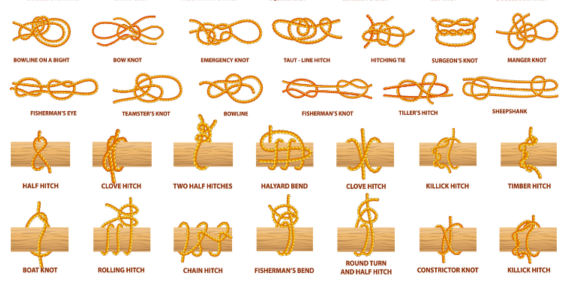Embarking on a boating adventure is an exhilarating experience, but it requires more than just navigating the waters.
Whether you’re a seasoned sailor or a novice boater, mastering basic boat knots is essential for safety, security, and seamanship. From securing lines to tying up at the dock, knowing the right knots can make all the difference.
In this blog, we’ll explore the fundamental boat knots every boater should learn, empowering you to handle various situations with confidence and ease.
Understanding the Importance of Boat Knots
Boat knots are not just about tying ropes; they are fundamental skills that every boater should possess.
Properly tied knots ensure that lines remain secure, preventing accidents, damage to the vessel, and injury to passengers or crew.
Additionally, knowing the right knots can save time and effort when docking, anchoring, towing, or securing equipment onboard. Whether you’re a recreational boater, a sailor, or a professional mariner, mastering basic boat knots is an essential aspect of seamanship.
Now, let’s delve into some of the basic boat knots that every boater should learn:
Clove Hitch
Ever needed to tie your boat to a post or a pole real quick? The clove hitch is your go-to knot! It’s super easy to tie and untie, perfect for when you’re in a hurry or just need a temporary hold.
Here’s how you do it: make a loop around the object, then cross the working end over the standing part and tuck it under the first loop. Pull it tight, and there you go! Your boat is snug as a bug.
Bowline
The bowline knot is like the superstar of knots! It makes a strong loop at the end of your line, which is handy for tying up at a dock or securing stuff on your boat.
Picture this: make a little loop near the end of your line (we’ll call it the rabbit hole), then pass the working end through the loop (the rabbit goes out of the hole), wrap it around the standing part, and tuck it back down through the loop (the rabbit goes back into the hole). Tighten it up, and boom! You’ve got yourself a bowline knot.
Figure Eight Knot
Do you need to stop your line from slipping through something? The figure eight knot is here to help! It’s super simple and does the job well.
Just make a loop in the line, pass the working end behind the standing part, around it, and back down through the loop. Pull it tight, and voila! You’ve got a neat little figure-eight shape that’ll keep your line in place.
Round Turn and Two-Half Hitches
This one’s a bit of a combo deal, but it’s great for securing your lines to cleats or bollards. The round turn gives you some extra grip, while the two half hitches make sure everything stays put.
Here’s the drill: wrap your line around the cleat or bollard with a round turn, then make two quick half-hitches around the standing part of the line. Pull them tight, and you’re good to go!
Anchor Bend
Last but not least, we’ve got the anchor bend! This one’s specially made to attach your anchor line to your anchor nicely and tightly. You don’t want that anchor going anywhere! Pass the line through the anchor’s eye, then make two turns around the standing part of the line.
Finally, tuck the working end under itself and give it a good tug to secure the knot. And there you have it – your anchor’s not going anywhere!
Final Words
Mastering basic boat knots is an essential skill for every boater, whether you’re navigating coastal waters, cruising on lakes, or sailing the open seas.
By learning and practicing these fundamental knots, you’ll be better equipped to handle various boating situations safely and confidently. Remember to always inspect your knots for security and reliability, especially when safety is at stake.
So, whether you’re tying up at the dock, anchoring in a secluded cove, or towing a vessel, trust in your knot-tying skills to keep you and your crew safe on the water.
Happy boating!

